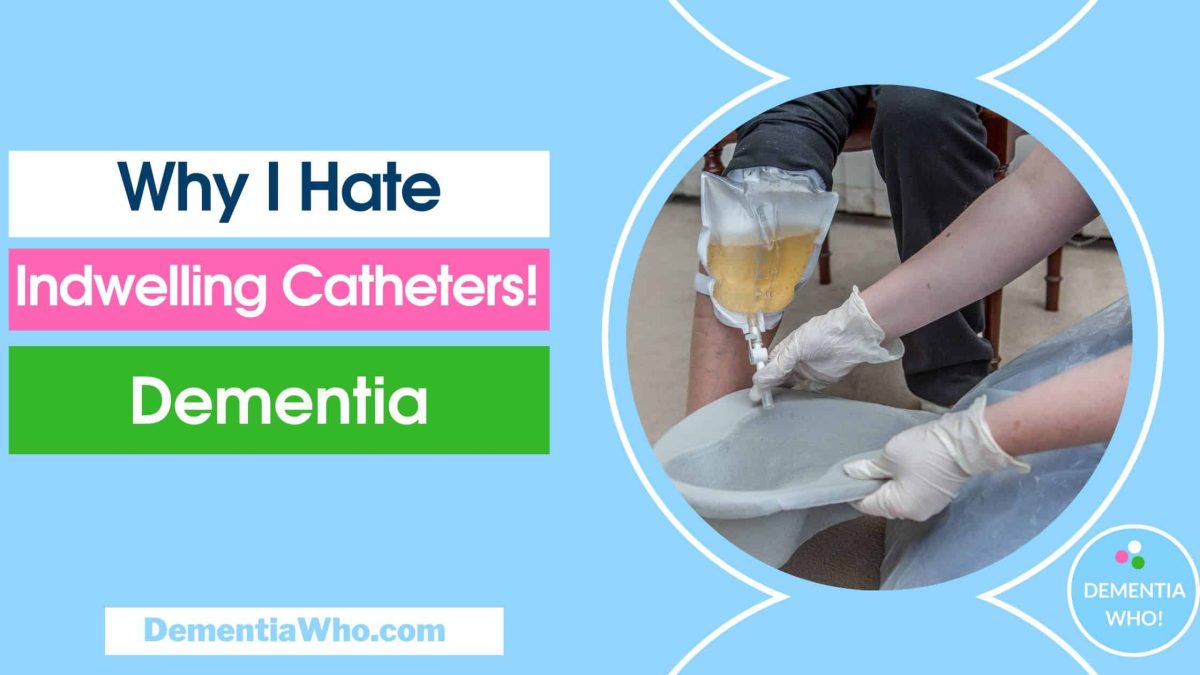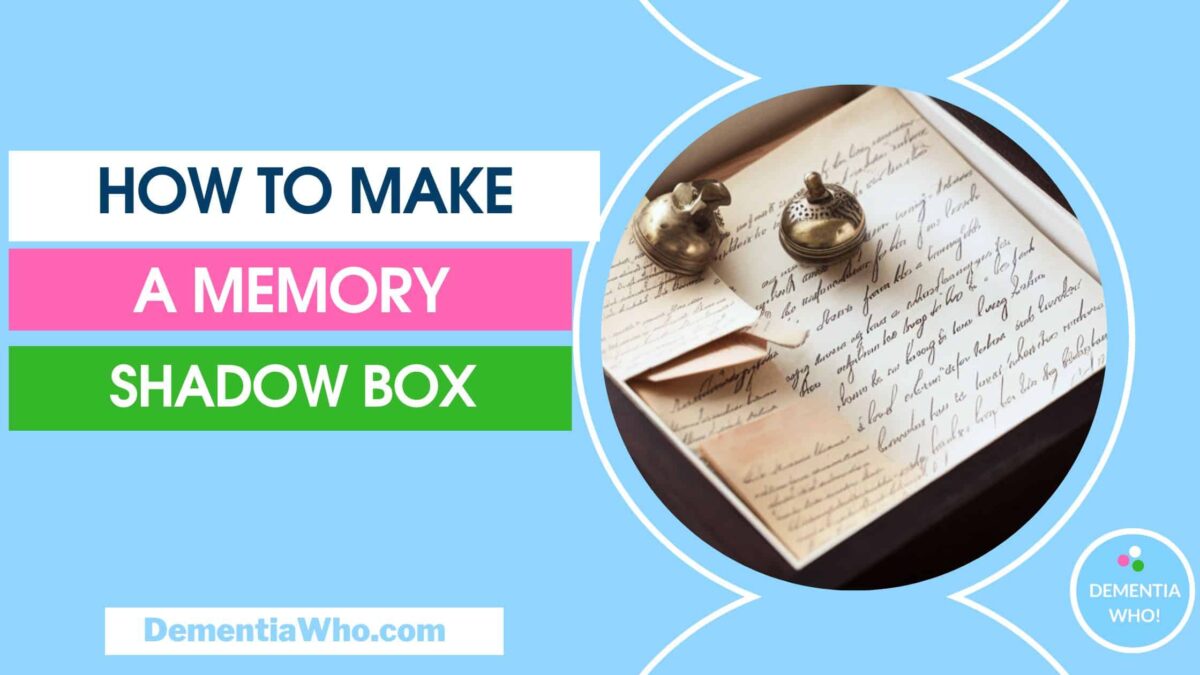I hate indwelling catheters, and I think many families & those living with dementia will agree. I hate the bloody thing, mum’s has been changed countless times. It’s just a constant headache, and pain & discomfort for mum. I don’t see the benefits of it anymore but our urologist refuses to remove it! Hate it!
Ok, that’s a bit strong, I want it removed and the urologist for mum says that medically the best option for her is for it to remain.

Early Days with an Indwelling Catheter
Mum is living with Alzheimer’s disease and had an indwelling catheter fitted back in August 2022. An indwelling catheter, sometimes known as a Foley catheter is a type of urinary catheter that is inserted into the bladder through the urethra to drain urine because for various medical reasons the bladder isn’t emptying properly.
The first six months went smoothly despite my initial anxiety. Due to mum’s spinal condition, the burden of managing the catheter fell to me. I had to make sure that catheter hygiene was maintained, bags changed & emptied regularly, and dealt with any problems like mum trying to pull at it. She’s got dementia, it isn’t like she was going to remember what this thing between her legs was at all times!
Related: First Days Dealing with a Catheter – Dementia Caregivers
The Issue – Catheter Bypassing
The indwelling catheter type that mum was fitted with is designed to remain in place for 12 weeks, every 3 months, so barring no complications it’ll be changed around 4 times in a year. But mum had a major problem, her catheter kept bypassing! And I mean bypassing a lot!
Catheter bypassing is where urine leaks around the catheter instead of going through it and draining into the leg bag. It can be caused by several factors like blockages, tubing kinks, positioning, urinary tract infections (UTI’s) etc. If your catheter bypasses and you’re able to resolve why, which we did successfully on many occasions, then the catheter stays in place, otherwise it needs to be replaced.
Deep breath, mum has had her catheter replaced due to unresolved bypassing, in let’s round up to 10 months, 16 times!! Let me say that again 16 times, and only twice this year so far, so that’s 14 times in 8 months since May 23. Her latest bypass was last week.
Dealing with Pain and Soreness
I could deal with the cleaning consequences of the catheter bypassing, but the frequent need for the catheter itself to be changed or adjusted to try to resolve the bypassing, led to significant pain and soreness for mum.
Imagine without dementia how uncomfortable, painful that is, a tube in your urethra being manipulated, or removed and reinserted despite numbing cream.
Now imagine if you have dementia and you’re approached by strangers (district nurses) that start to mess around in your private area, holding your legs open when you don’t want to, causing you distress and discomfort.
And it’s not as simple as just inserting it, because mum isn’t able to support her legs it became harder to find the right position resulting in multiple attempts of insertion. With multiple attempts, the area becomes inflamed, and sometimes blood appears in her leg bag but we’re told not to worry about it as it caused by the TRAUMA of inserting a catheter or it’s a blood clot and likely was the cause of the bypassing!
The Threat of Moisture Lesions and Pressure Sores
Frequent bypassing of indwelling catheters creates a moist environment, perfect ground for moisture lesions to develop, particularly as mum isn’t mobile.
This year we dealt with our first pressure sore, terrifying (do not in any circumstances google pressure sores and look at the pictures! Don’t do it!) These sores are not only painful but can also lead to serious infections if left untreated.
If you have a moisture lesion/pressures sore continually being wet then they take even longer to heal. And because mum’s diabetic wounds take ages to heal.
We’re constantly monitoring for skin breakdown, making sure mum’s position is regularly changed and getting airflow seating equipment to reduce the risk of more pressure sores developing.
Searching for Solutions
I was determined to try to help mum. The reasons for bypassing ranged from UTIs, to clogged tubing to improper catheter fit and positioning. We talked to the incontinence nurse so many times and each time it was a wait and see approach. Wait til the UTIs clears up, wait to see if the new catheter type or size helps.
Related: Antibiotics the answer to recurrent UTIs?
I learnt how to “milk” a catheter tube to try to move sediment down and unblock the tube. I was trained on how to use bladder washouts to clear away any debris. But everything took a long time. Mum’s catheter often failed to drain properly leading to overflow and full bypassing accidents multiple times a week.
One incident of bypassing meant that mum’s bladder didn’t fully empty for over 12 hours and she became delirious, that was probably the scariest time because of concerns of mum developing sepsis from an infection.
We worked through the majority of catheter bypassing issues, changed catheter sizes and nothing worked, obviously if you had 16 catheter changes.
We finally got a referral to the Urology department as they suspected a bladder stone. Getting the right medical advice took months, months of chasing until they got fed up and called me at 5.30pm one evening offering me a last minute cancellation.
The Medical Necessity of the Catheter
The good news was that they didn’t find a bladder stone, but during the cystoscopy they felt a bladder spasm so prescribed medication to control that. This is where I got that response “we just know” it’s better for her when I asked for the damn catheter to be removed as the discomfort that mum was experiencing wasn’t worth it.
Related: Getting Scolded & Medications Concerns
Eventually, they explained the challenges associated with the catheter, its removal was not a viable option due to underlying medical concerns due to the risk of kidney distension and urinary retention. The catheter helps in preventing potentially life-threatening complications for mum like kidney damage or severe urinary infections.
Since taking the bladder spasm medication, we’ve only had two catheter bypasses and I know that these are related to UTIs.
What I’ve learnt
Trying to find solutions to why mum’s catheter was bypassing all the time was like pulling teeth out. I wish I understood the causes better and what we could’ve tried straight away, because the solutions were drip fed to us, only after multiple bypasses did the local incontinence nurse suggest alternatives ways to reduce or prevent them.
Even convincing them for a referral back to Urology was exhausting despite the mounting evidence that something was wrong.
Some of things we tried I wasn’t aware of, the district nurses that came out to deal with it were varied in their knowledge, some gave excellent advice like learning to milk the catheter, others just changed the catheter ruling out sediment buildup by looking at the top of the catheter rather than cutting it open to see if sediment was built up further along. But all of the district nurses were fantastic in helping to settle mum and trying to support her.
The Struggle Continues
However, the number of catheter changes meant that we increased the risk of bacterial infection (by inserting a foreign body) for mum, caused her pain and discomfort for days after the procedure and scared her silly in the attempted insertions.
Sometimes mum was lucky with just one attempt and bingo urine flowed, but I remember all the times it took multiple attempts and how hard that was for mum despite our best efforts.
I won’t forget this, and everyday I have to watch out that mum doesn’t tug on it or the care workers don’t accidentally move or position it incorrectly so that it causes some small trauma and leads to a catheter bypass.
So yeah I hate bloody (literally sometimes is) catheters. My heart goes out to anyone else having to deal with catheter issues.
That’s it, see you next week
PS – I am going to document everything I tried to resolve bypassing in case it helps other dementia caregivers in their journey
PPS- here’s cutie Kikki in her new play tunnel absolutely living her best life!













I love the Purewick, external catheter, that we use for my mom. It has been a life saver, especially for keeping my mom dry at night. I am able to get a somewhat better nights sleep thanks to it. It is not covered by Medicare here in the United States, so it is expensive
That’s sounds great for your mum, glad it worked, really useful for those who medically might not need an indwelling catheter. Thanks for sharing
I am with you on catheters.Hate them too. My husband has dementia and it wasn’t long after that he was diagnosed with an enlarged prostrate resulting in a reduced urine flow.Catheter inserted, which has resulted in countless visits to A&E, emergency admissions and weeks in hospital wards.
I know there are many relatively minor treatments/operarations that can sort the prostate problem, but they are never mentioned by the medics.
That’s the problem isn’t it. You don’t have time to understand other options when you’re dealing with other health issues & catheter is suggested, justifiably in some cases. But the impact on families with dementia doesn’t seem to be that well understood in my opinion.I hope you’re husband has improved & doing better now. Thank you for reading & commenting.
Mum has pulled 8 catheters out ! She currently is going through what I call the obsession stage and I’ve been up all night as she keeps fiddling with it and then it bypasses it has not come out yet this time! I’ve tried pjs pads making her put her hands out the covers watching her till she is sleep but she still does it ! Any tips I’d be grateful of mum has vascular dementia!
Oh my goodness, I can imagine how hard that is and so painful for her too. I did write this post about things you can do, https://dementiawho.com/how-to-stop-someone-with-dementia-from-pulling-out-their-catheter/ but for us the catheter sleeve helped a lot as the bag was mostly hidden, we use the catheter sleeve and catheter strap
Clothing is also a big help to hide the catheter, also fidget toys, blankets to keep her hands busy.
I hope some of this helps, otherwise talk to your doctor, as the trauma of having a catheter being pulled out on the urethra and bladder aren’t good. Wish you the best of luck.